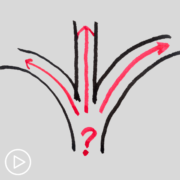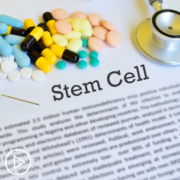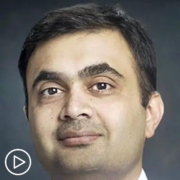What Promising Treatments Are Available for Diffuse Large B-Cell Lymphoma Patients?
What Promising Treatments Are Available for Diffuse Large B-Cell Lymphoma Patients? from Patient Empowerment Network on Vimeo.
What promising diffuse large B-cell lymphoma (DLBCL) treatments are available for patients? Expert Dr. Nirav Shah from Medical College of Wisconsin shares an update on emerging research and patient types who may benefit from potential treatment approvals.
Dr. Nirav Shah is an Associate Professor at the Medical College of Wisconsin. Learn more about Dr. Shah.
[ACT]IVATION TIP:
“…understand their stage of disease and review the treatment options available for that stage and subtype of diffuse large B-cell lymphoma to best optimize the regimen to each individual patient.”
See More from [ACT]IVATED DLBCL
Download Resource Guide en español
Related Resources:
Transcript:
Lisa Hatfield:
Dr. Shah, can you speak to some promising treatments that are available now for DLBCL patients?
Dr. Nirav N. Shah:
Yeah, so while we consider DLBCL to be one disease, there is a lot of heterogeneity in it, and so there are sort of subtypes of DLBCL that we approach differently. And so the most well-known standard of care for DLBCL is a chemotherapy regimen called R-CHOP. It’s a five-drug regimen, it’s given once every three weeks for up to six cycles, again, depending on the stage, the presentation that the patient is in.
However, the goal has always been to do better than R-CHOP and there is an exciting new regimen called pola-R-CHP which gives you a drug called polatuzumab (Polivy) in lieu of an older drug called vincristine (Vincasar PFS), which is part of the R-CHOP regimen, and that regimen was tested head-to-head against R-CHOP chemotherapy and did have a slight improvement about a benefit of 5 percent to 6 percent in terms of its ability to induce a long-term remission, and again, that number may sound small, but every patient matters, and so that regimen, some of us have started adapting that, although I will note that that regimen is currently not FDA-approved, and so its accessibility and availability may be limited, although I’m optimistic that this regimen will be approved and become an option for the frontline for patients to come.
There are some types of diffuse large B-cell lymphoma that are a little bit more aggressive, we call some of these double-hit lymphomas, so a term that you may hear if you’re diagnosed and it’s something a doctor may talk about, and so for those patients, we often use a higher intensive regimen, the regimen that we use at our institution is a regimen called dose-adjusted EPOCH and so you can see here that it’s a little bit complicated, there are caveats here, there’s different treatment options available, and the number of treatments we give is partially based on how you present and the stage that you initially show up with. And so I think that it’s important to have a conversation with your physician. And so my activation tip for patients is to understand their stage of disease and review the treatment options available for that stage and subtype of diffuse large B-cell lymphoma to best optimize the regimen to each individual patient.
Share Your Feedback:
Create your own user feedback survey









